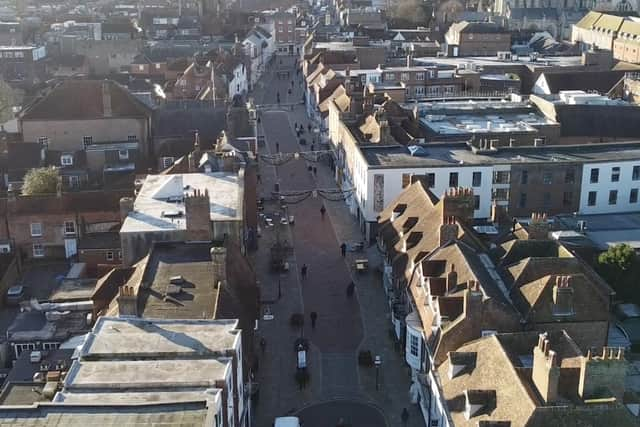Chichester's connections to the Romans following incredible discovery


The inception of Chichester traces back to 43 AD when it was established by the Romans. Four main Roman streets (North, East, West and South Street), surrounded by walls and gateways, still shape the main backbone of high street today.
The existing walls, visible today, originate from the 3rd century. They were constructed to safeguard the thriving town from raids along the coast and to uphold its trade and prominence. Erecting these walls, standing at a height of 7 meters, featuring towering bastions and gates, presented a significant undertaking. It required approximately 5000 cubic meters of facing stones and 20,000 cubic meters of chalk and flint fill. Over a span of 200 years, these walls effectively shielded Roman Chichester from external threats.
Advertisement
Hide AdAdvertisement
Hide AdWhen the Romans settled there, they also constructed a fort along the River Lavant to facilitate the delivery of supplies from France. The settlement was christened "Noviomagus" by the Romans at the time.
There is also a 57-mile-long Roman road that linked London (Londinium) to Chichester (Noviomagus Reginorum) built too. The exact date of construction hasn’t ever been confirmed.
However, based on archaeological artefacts discovered along the route, it seemed that it was in use by 70 AD and may have been built in the first decade of the Roman occupation of Britain (as early as 43–53 AD).
Sources for this information include Wikipedia, Sash Window Workshop and The Lost Walls wesbite.
Comment Guidelines
National World encourages reader discussion on our stories. User feedback, insights and back-and-forth exchanges add a rich layer of context to reporting. Please review our Community Guidelines before commenting.
